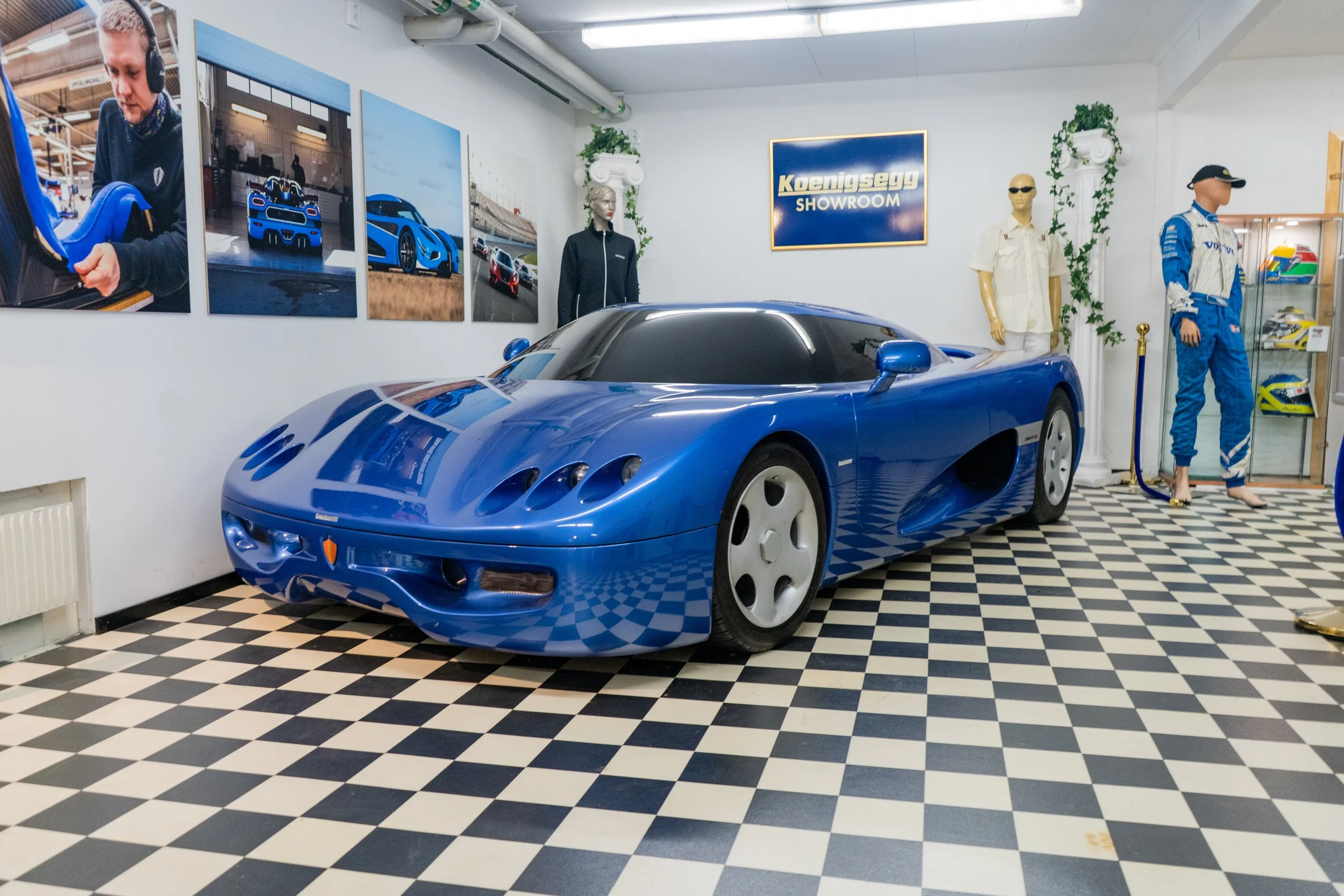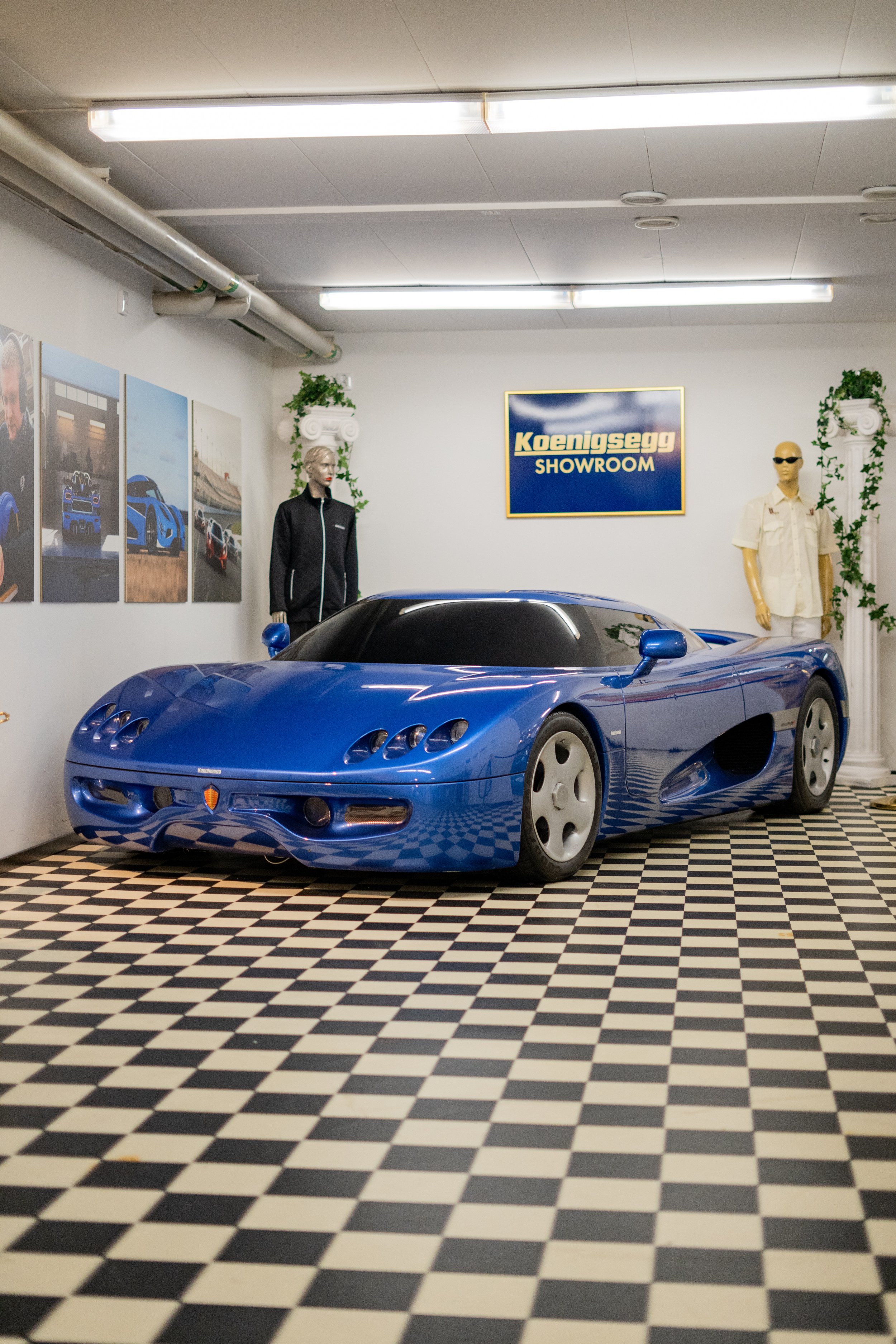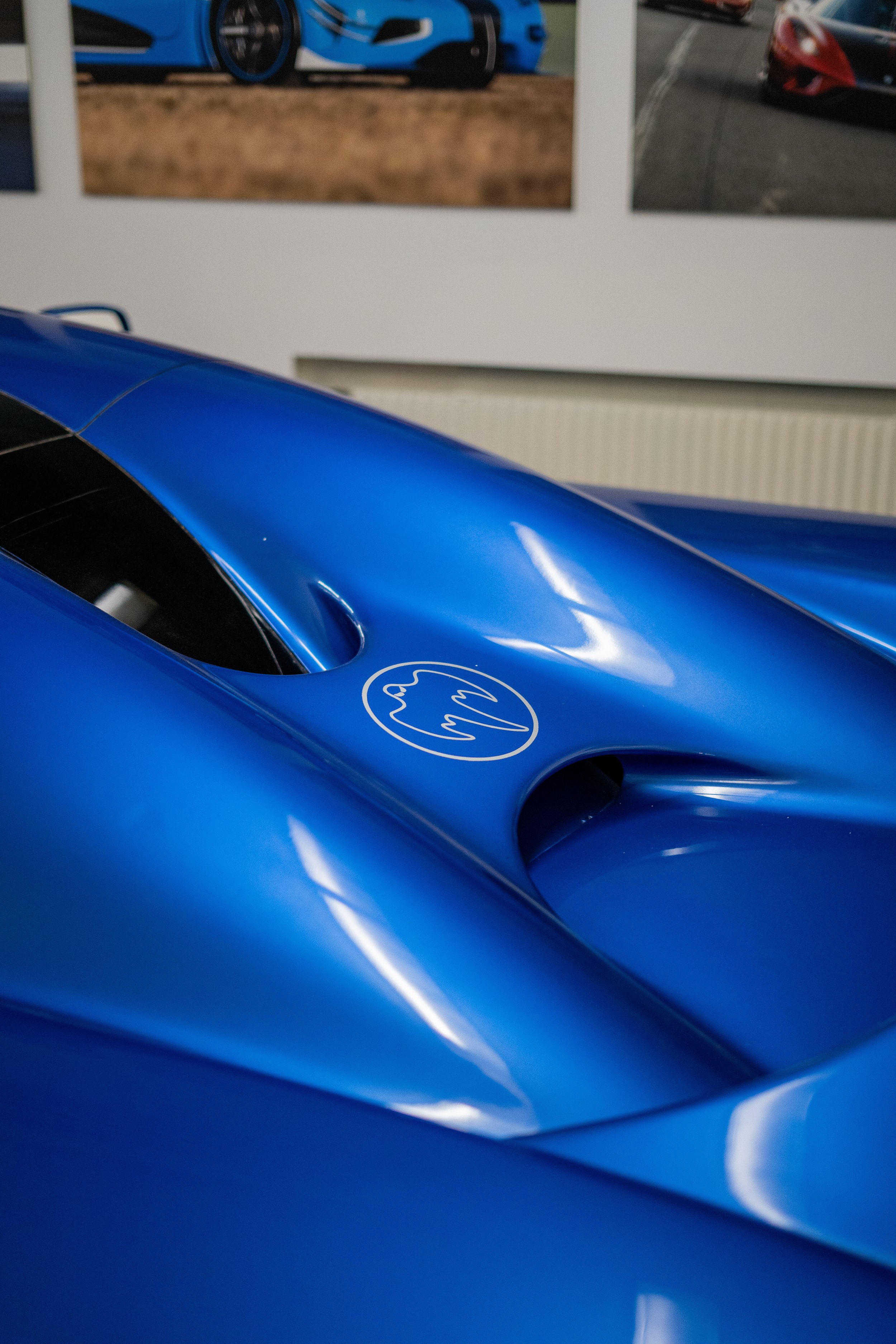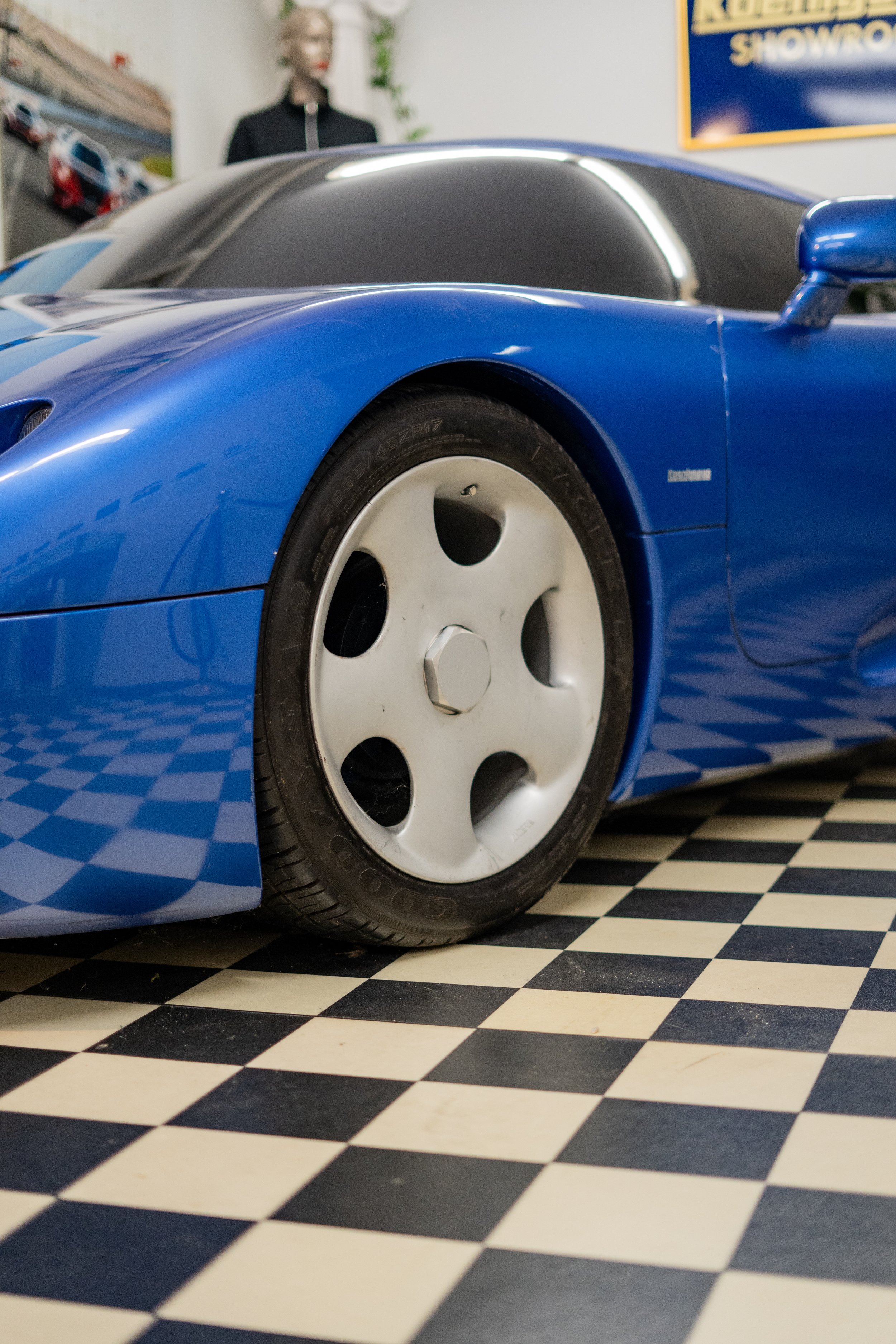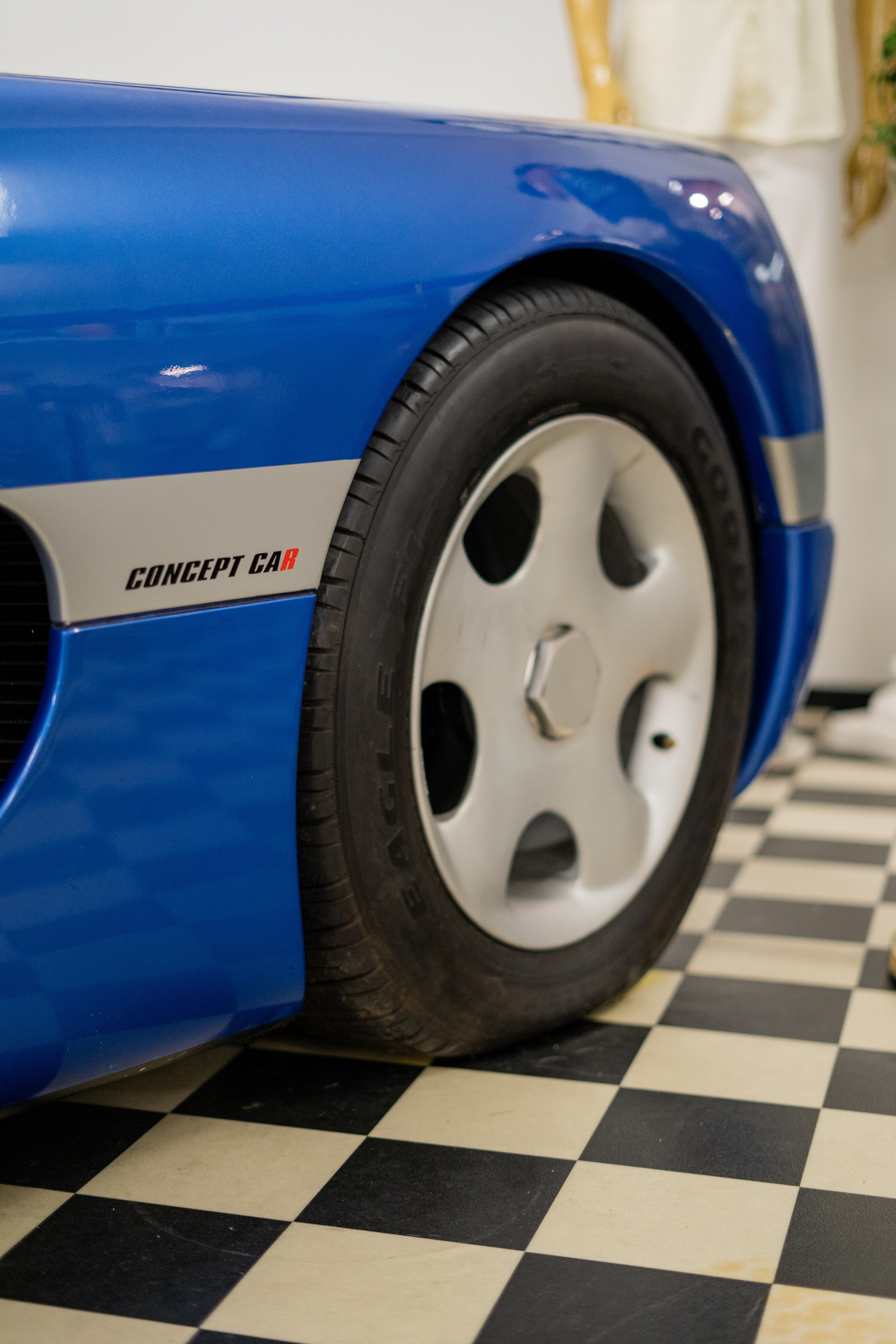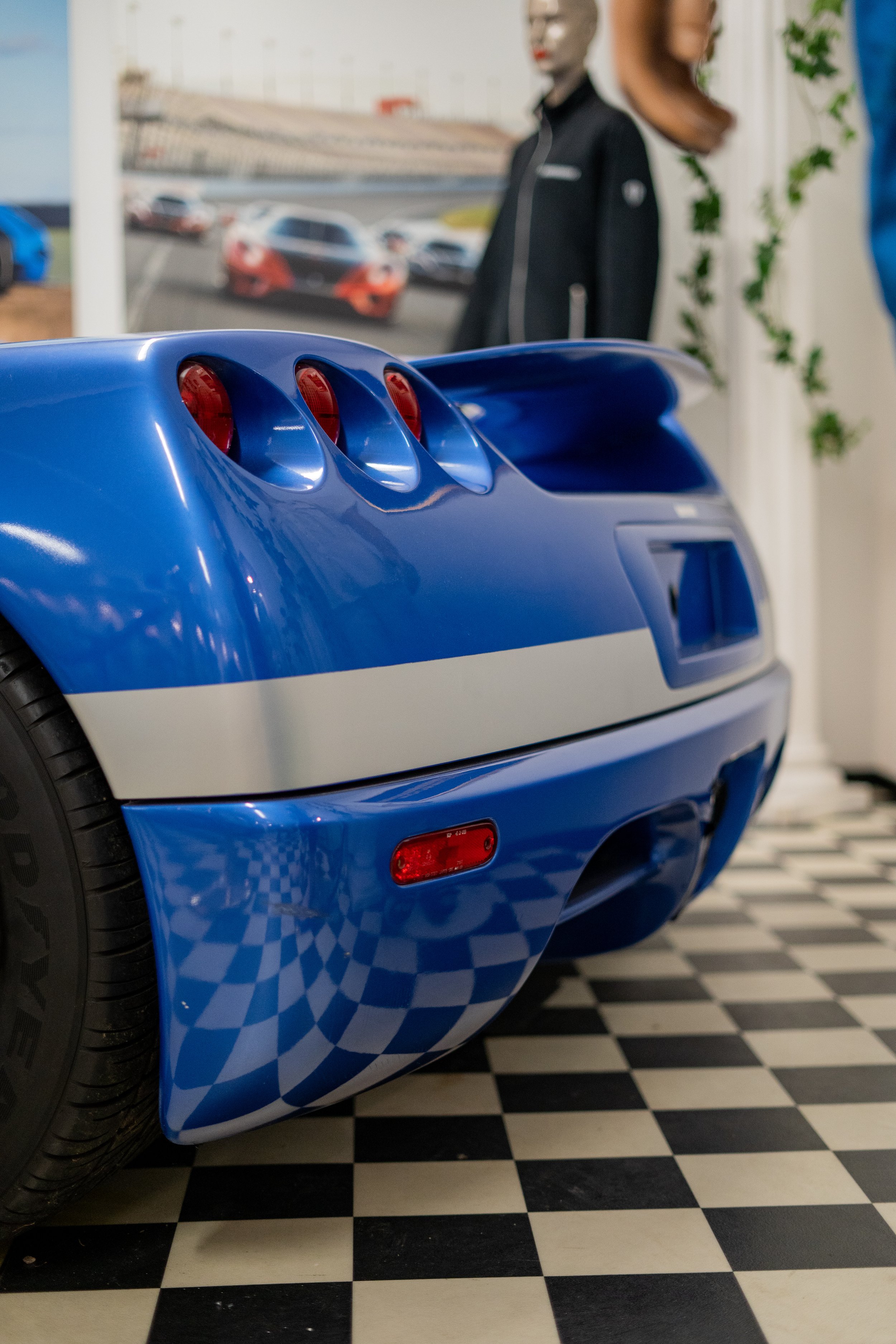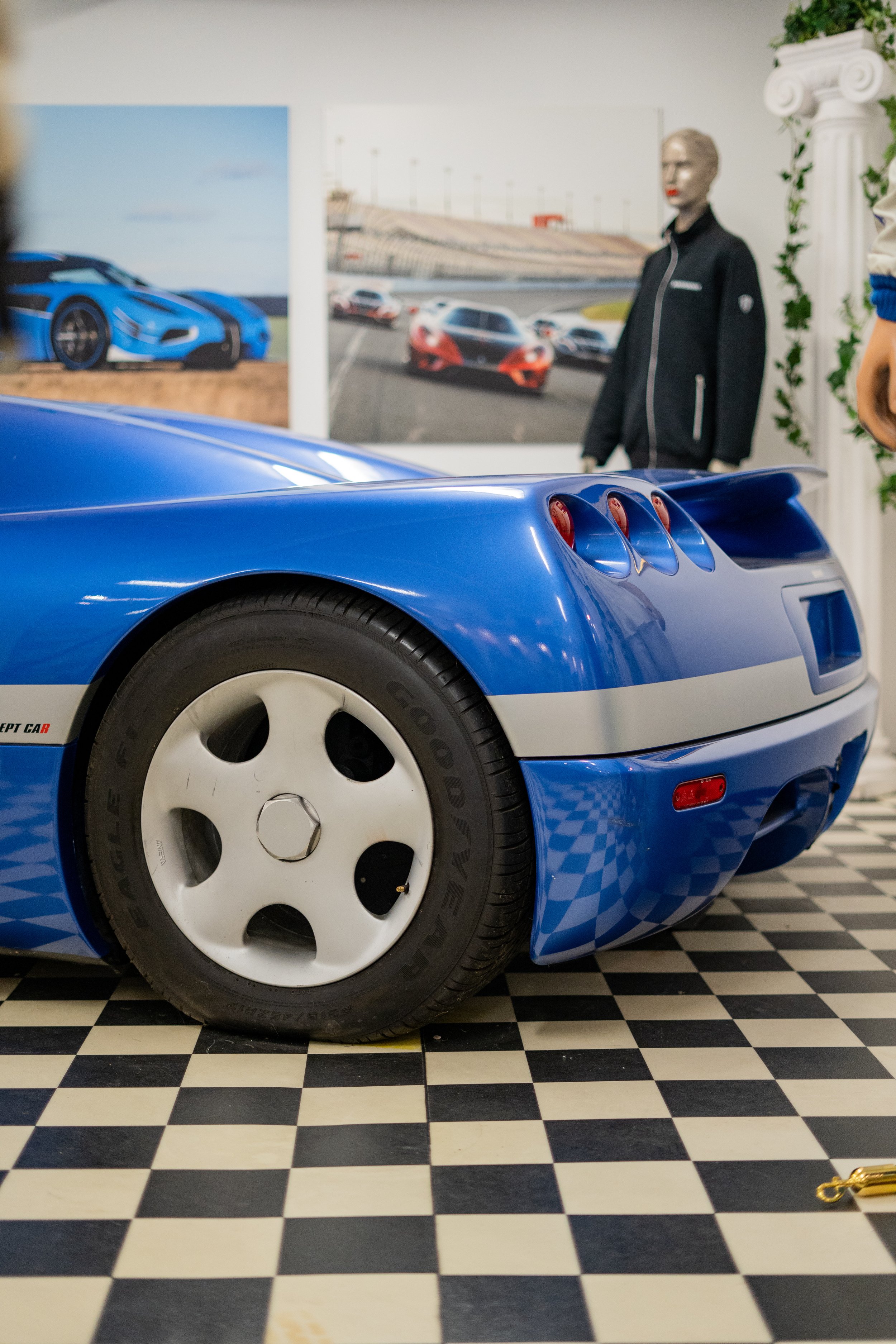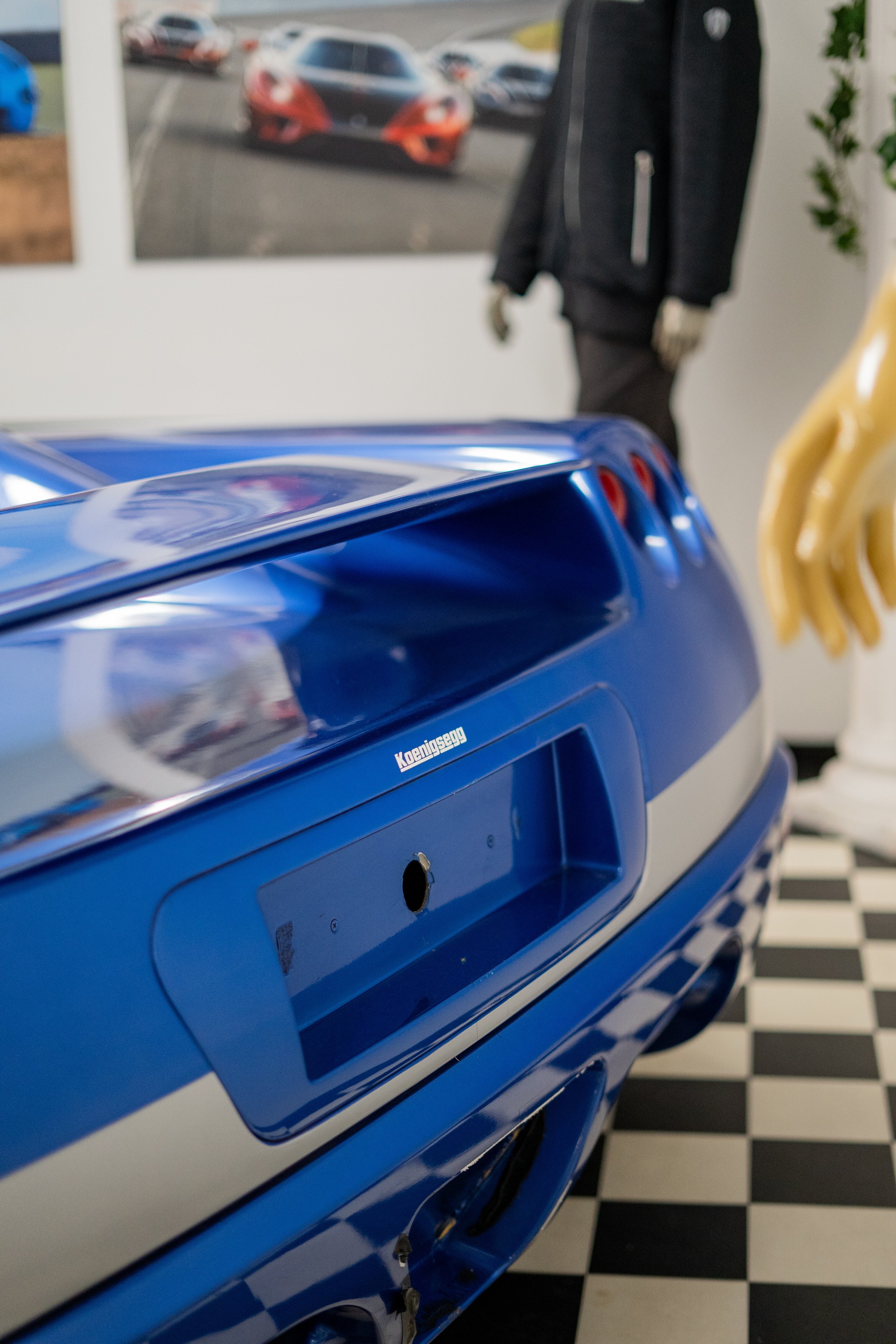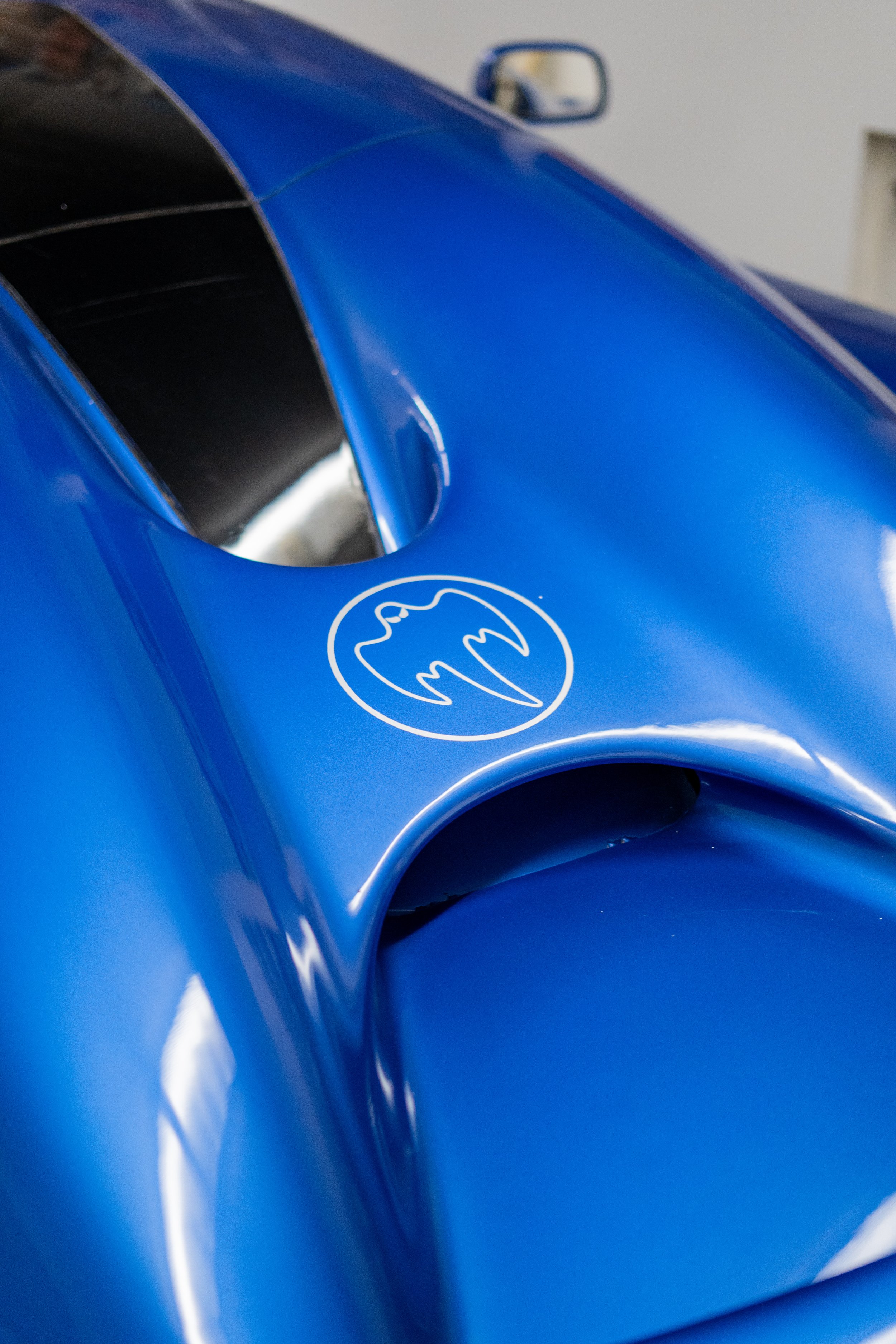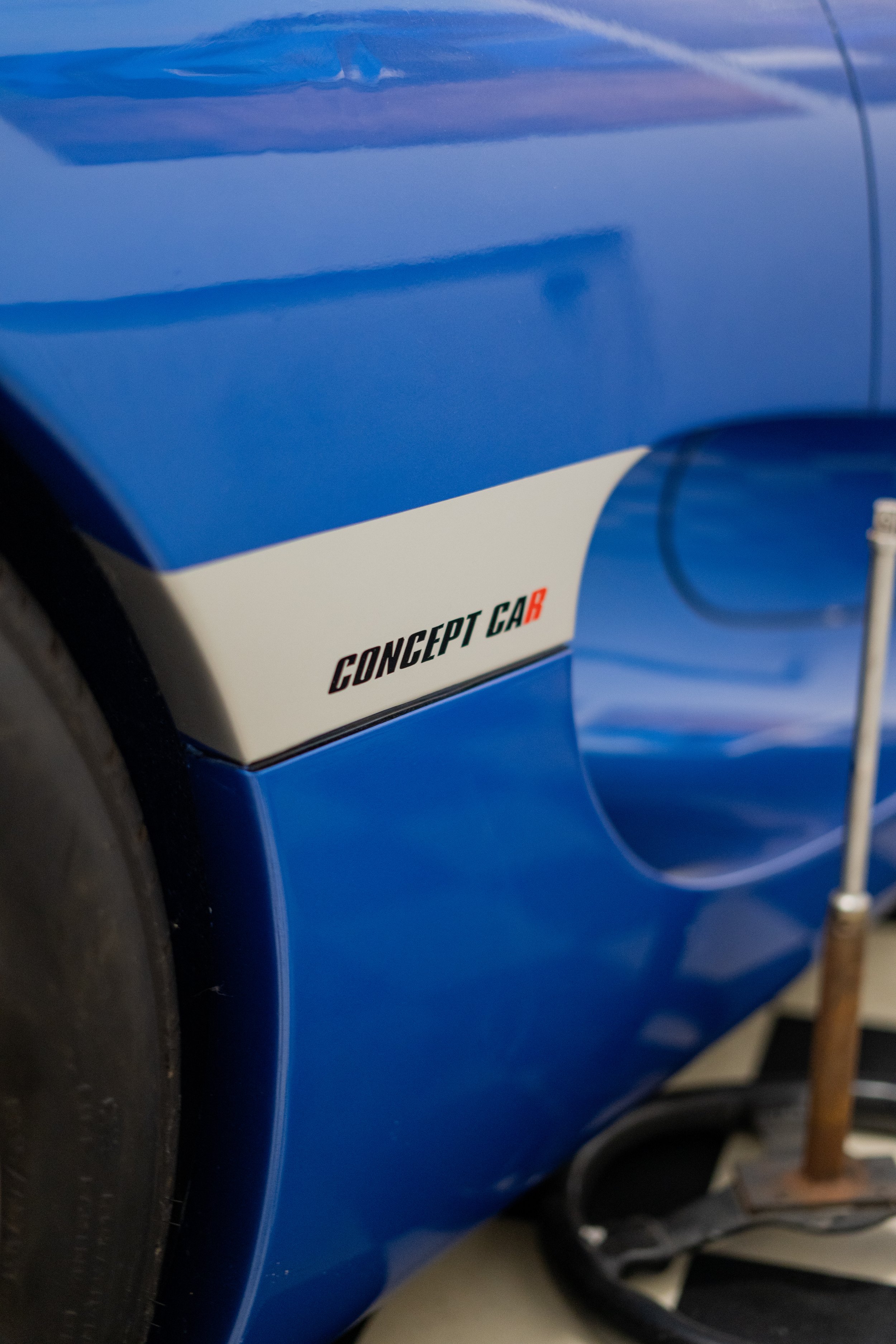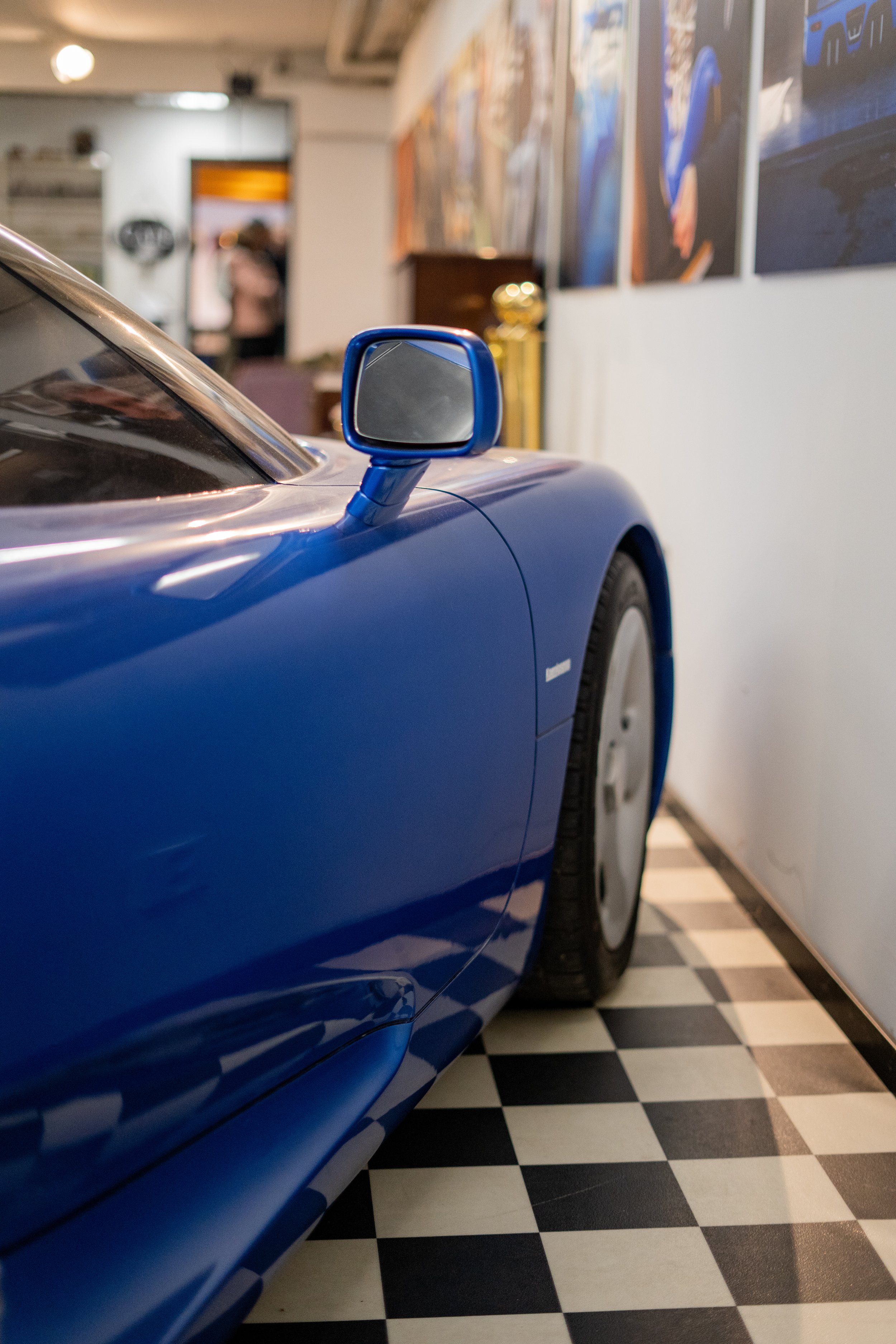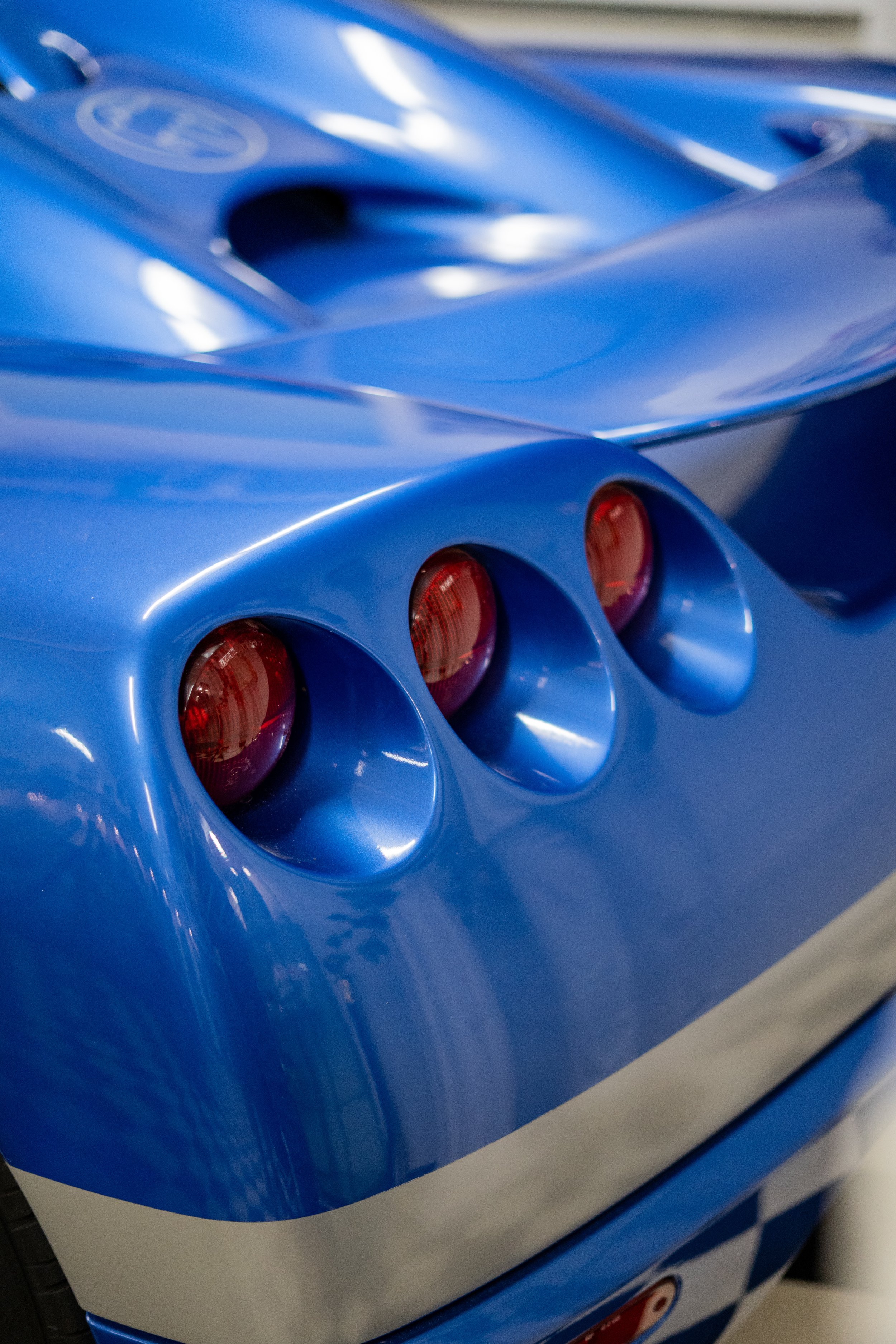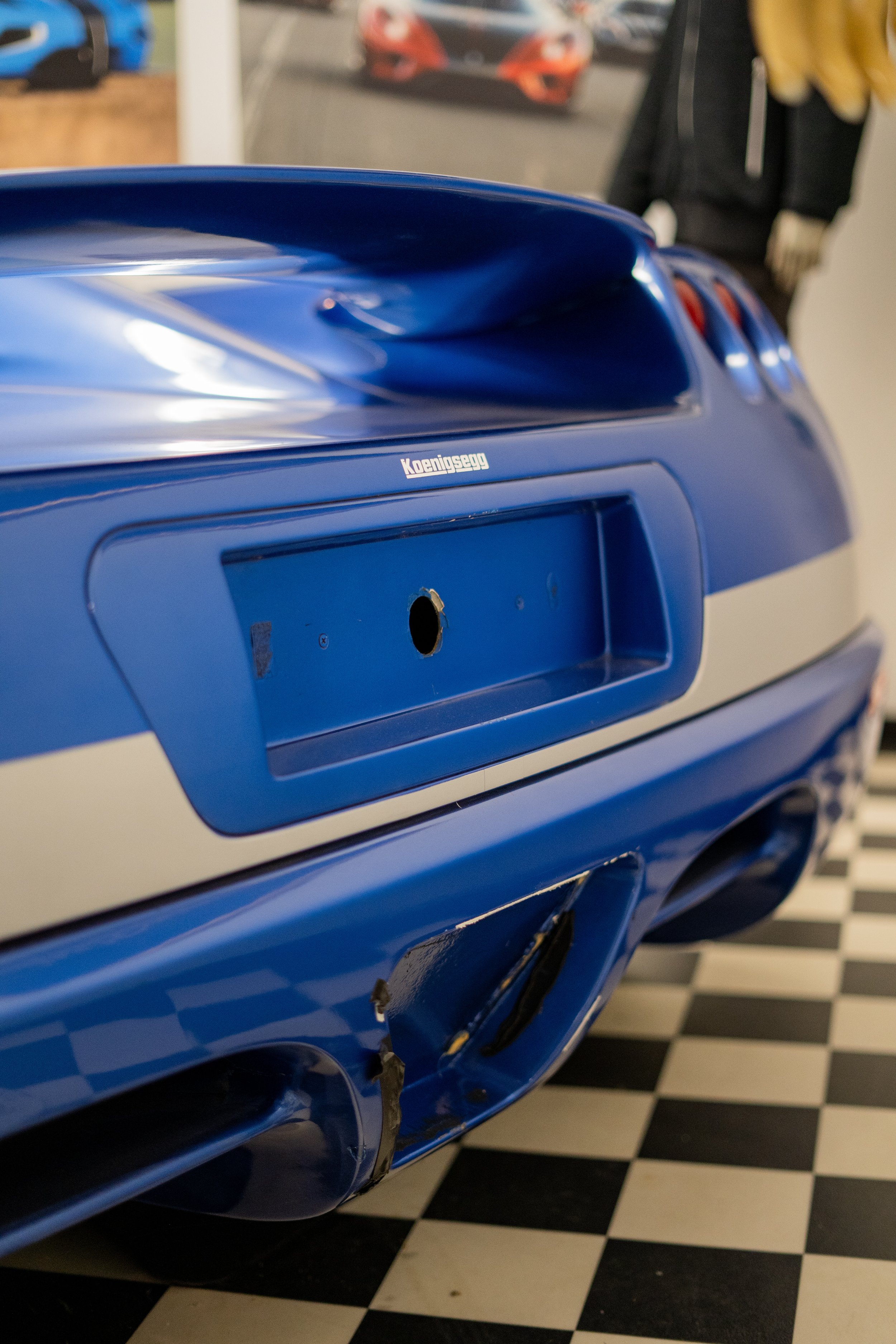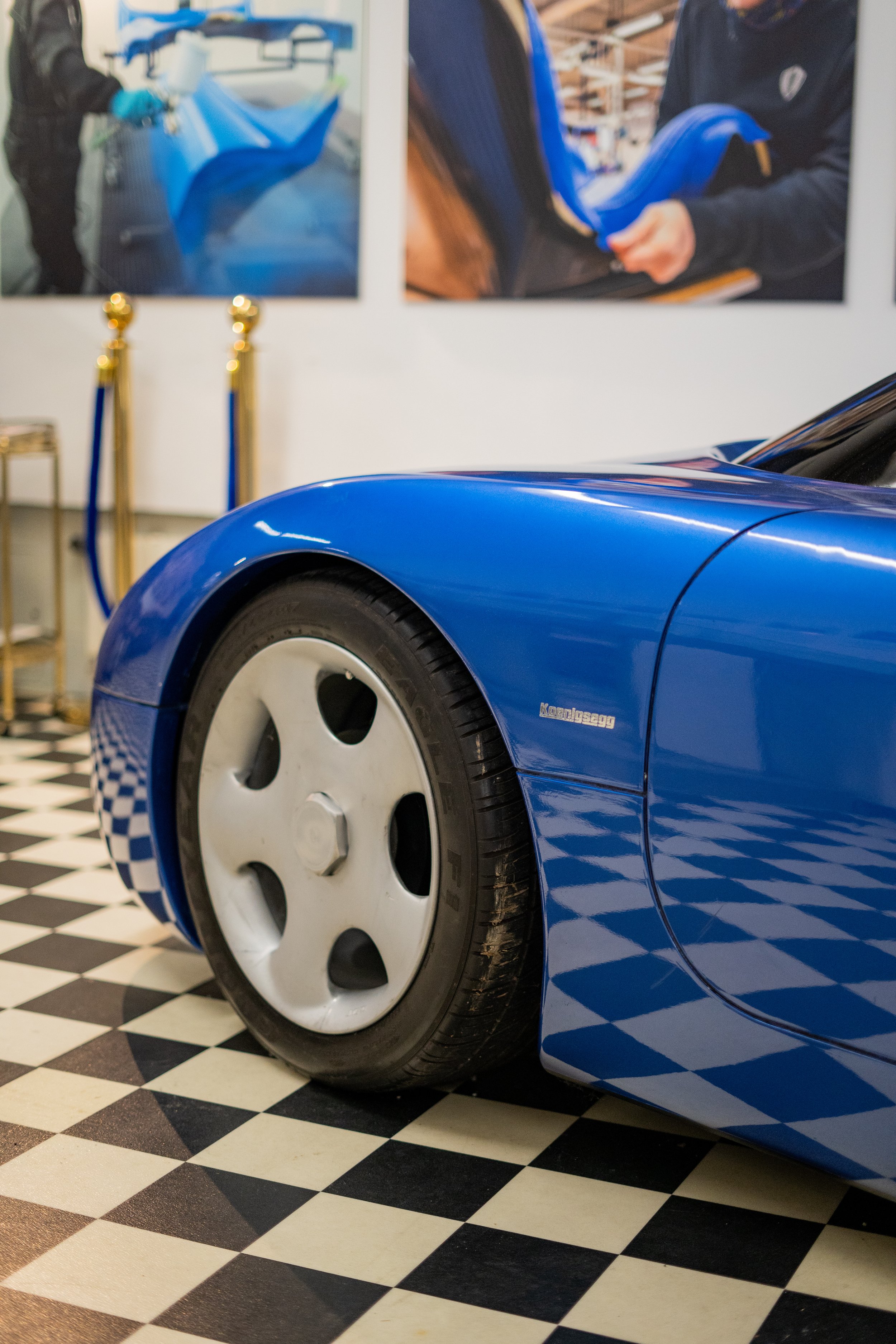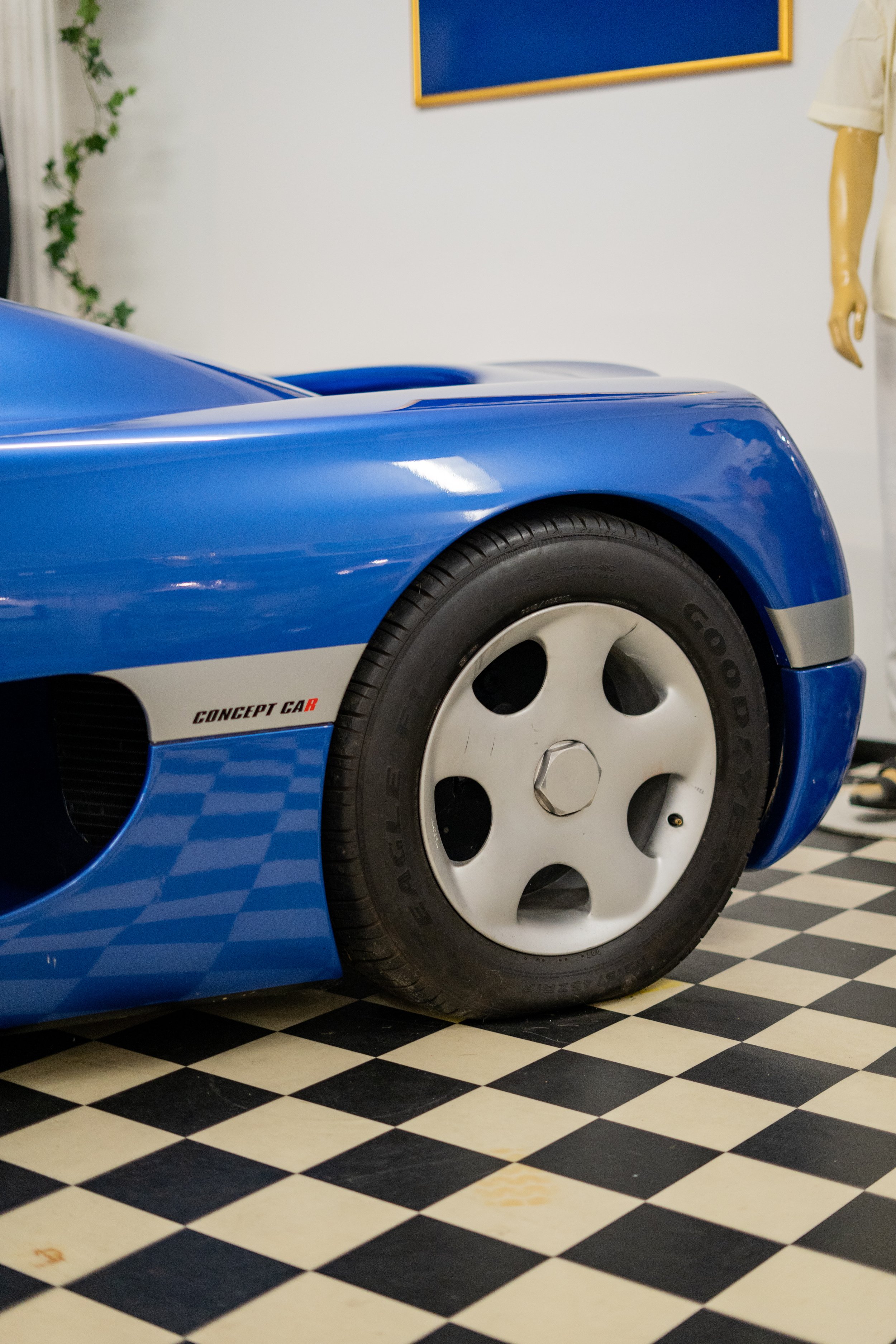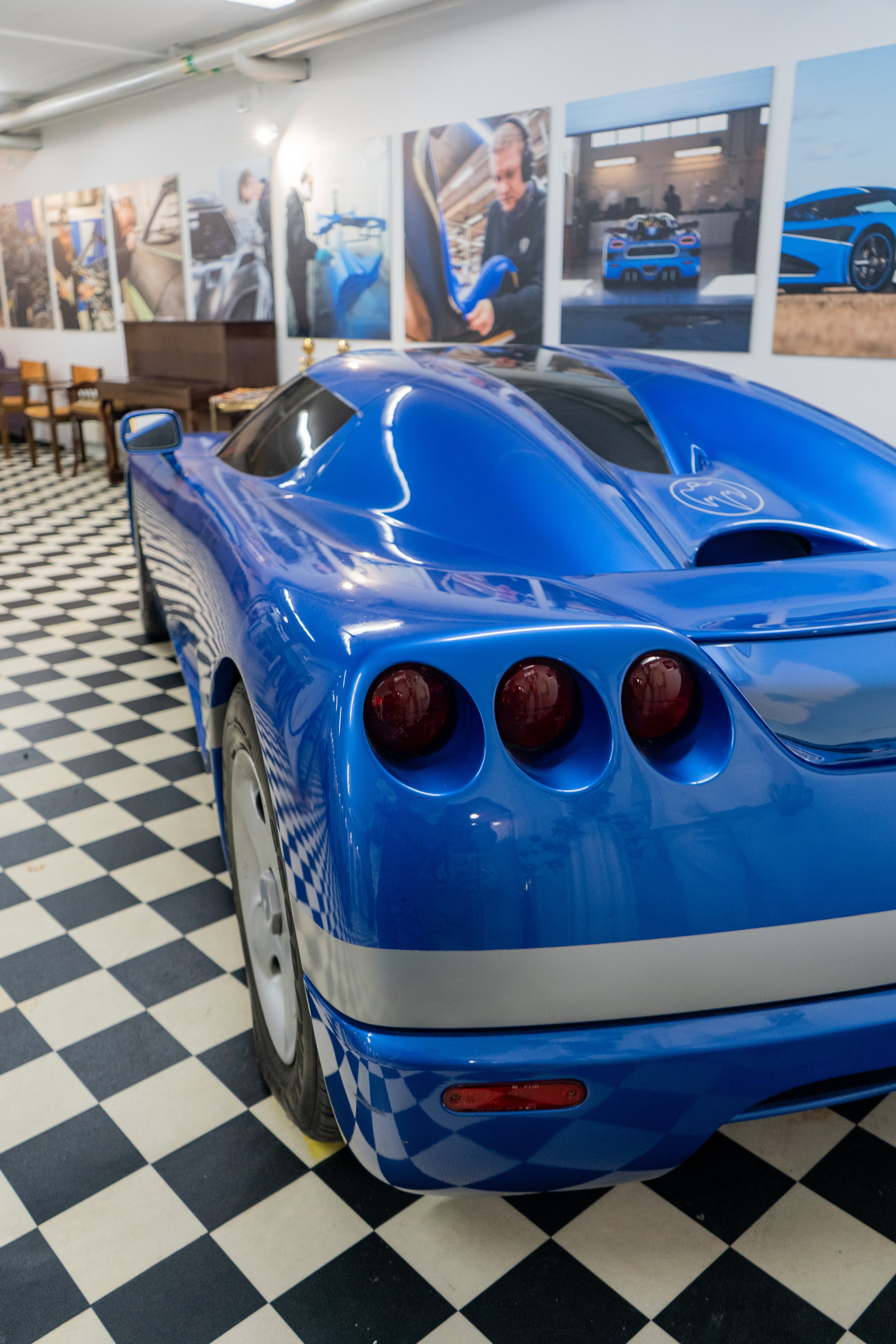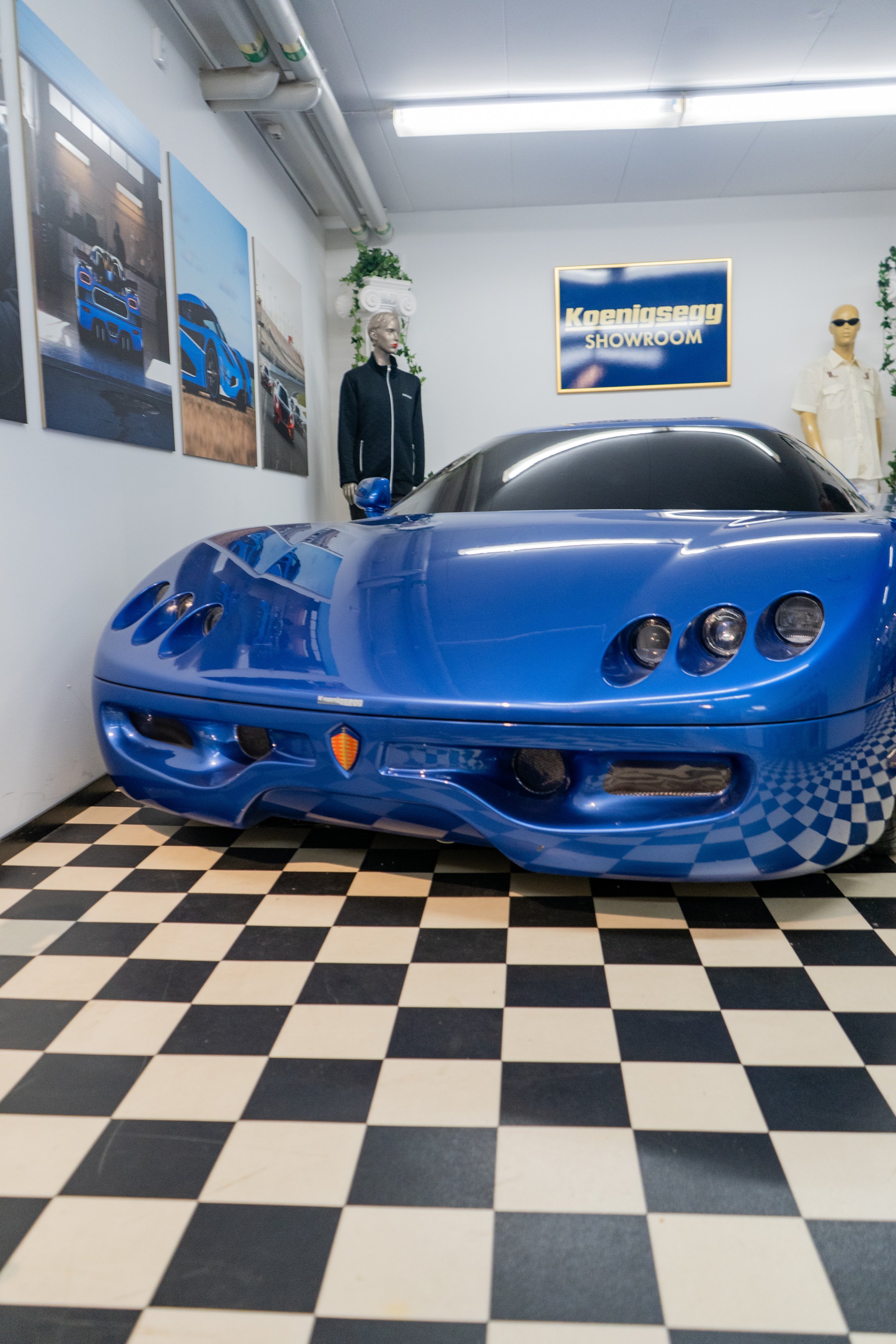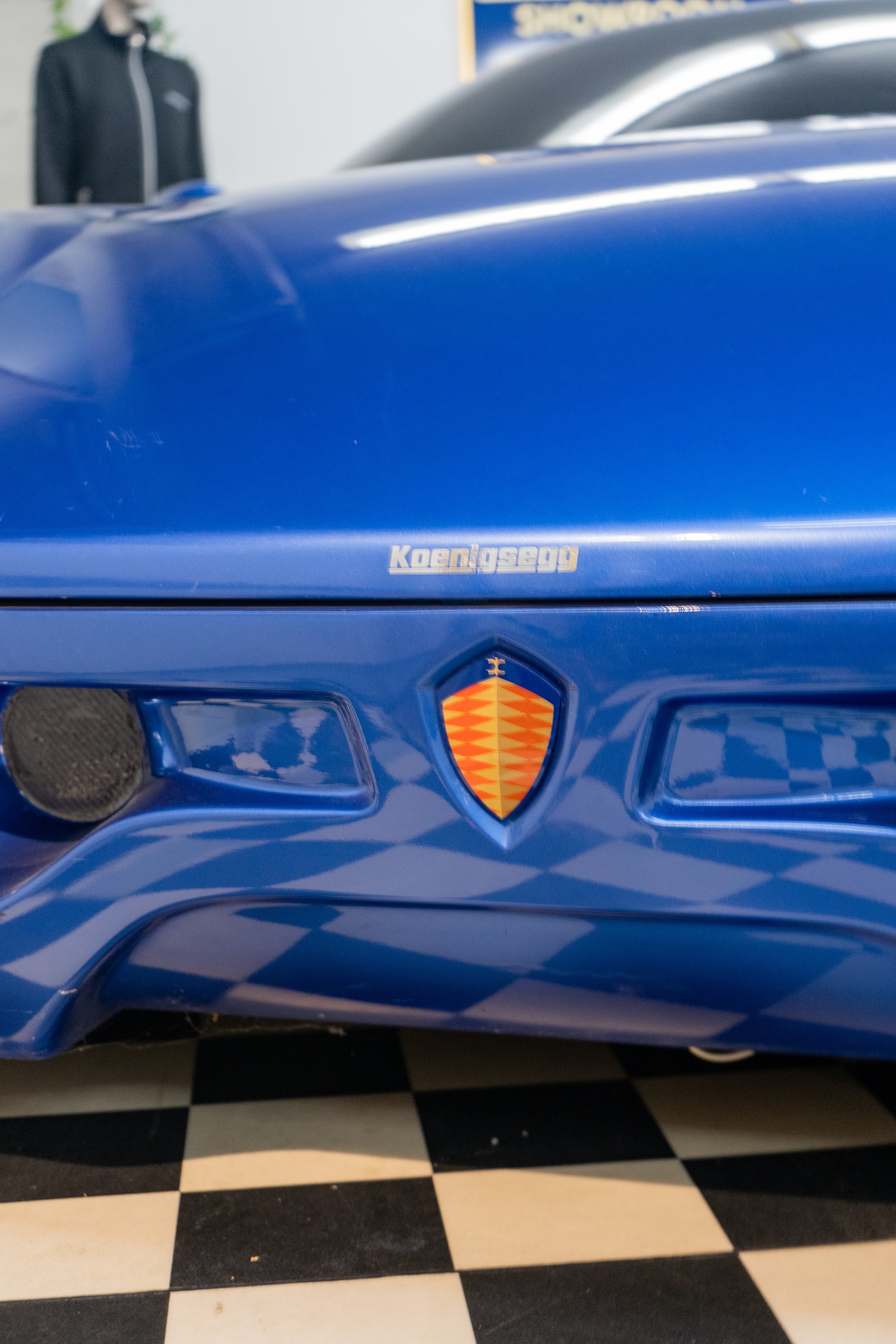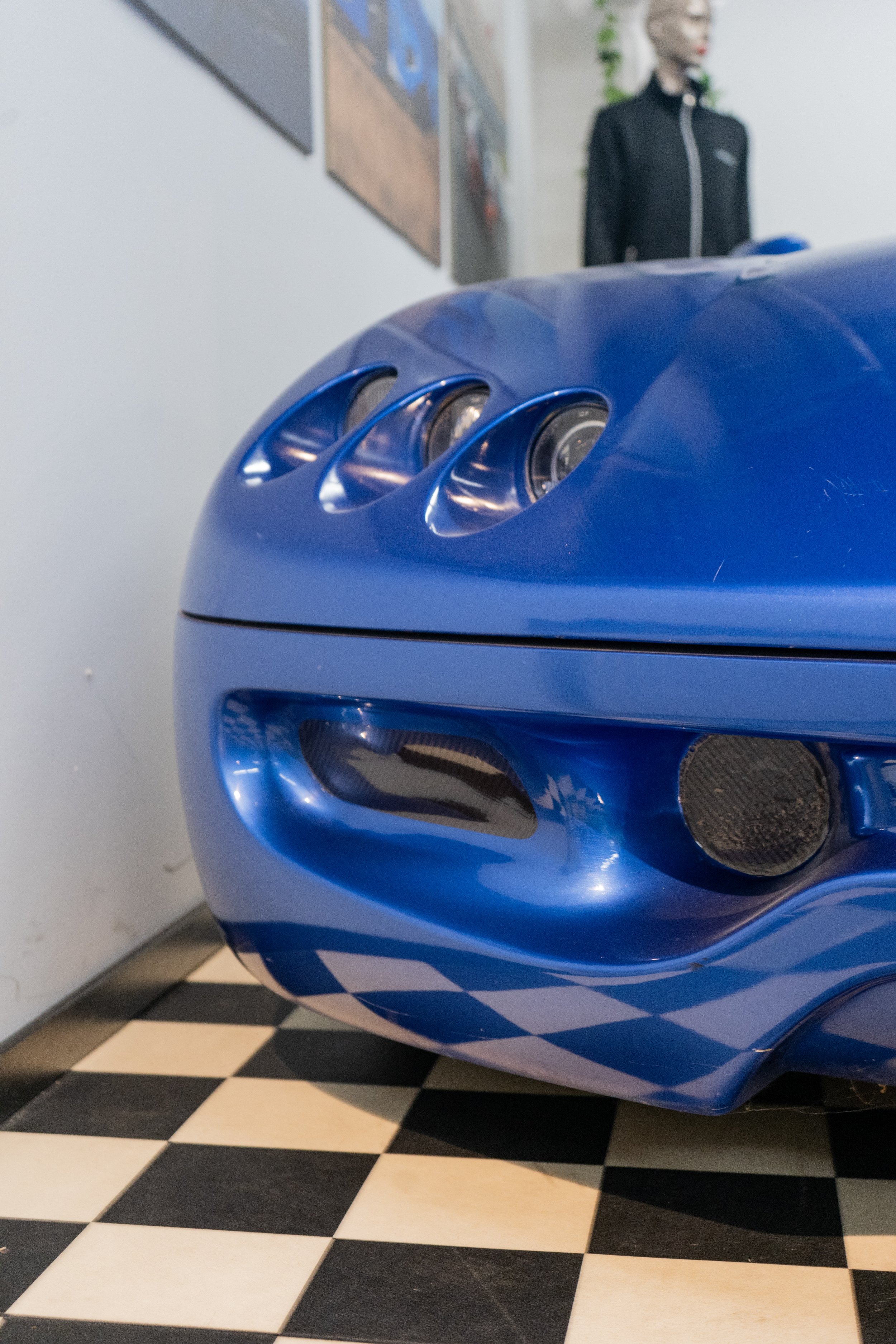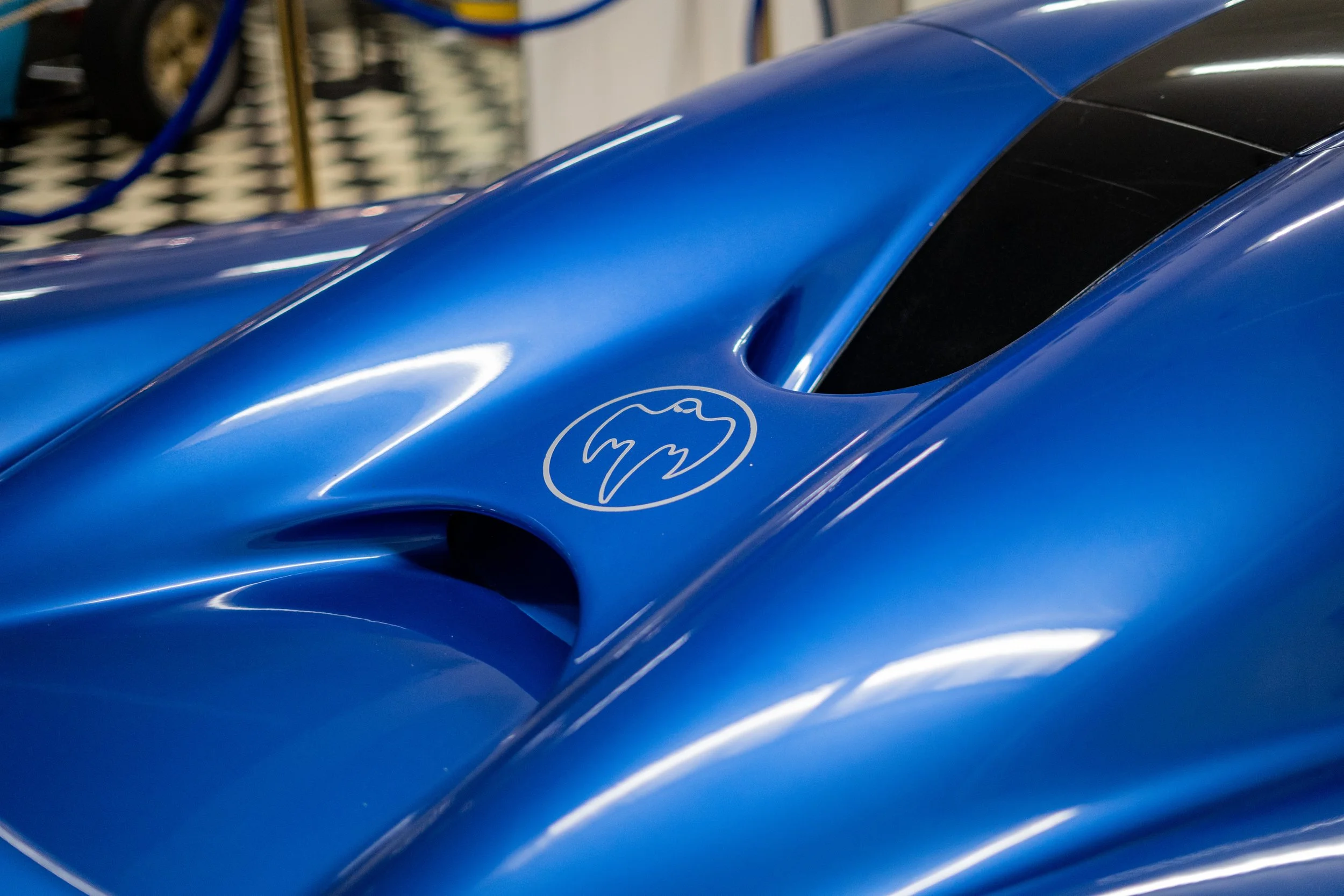Visiting the Koenigsegg CC Static Model at Autoseum
by Mika Bains
In the southeast corner of Skåne, Sweden’s southernmost province, sits the seaside town of Simrishamn. With fewer than 7000 people, it’s quite the unassuming place. It has a nice beach and a quaint town centre, with the sea breeze constantly reminding you of your proximity to the Baltic. It is certainly not where you’d expect to find a Koenigsegg, let alone one so significant to the history of the company.
Simrishamn is home to Autoseum, one of Sweden’s premiere automotive museums. Autoseum hosts a collection of more than 200 vehicles, some of which date back more than a century. Walking the rows of the museum’s main exhibition hall, you’ll be greeted with an eclectic mix of cars, ranging from pre-war to movie cars to 2000’s supercars (eg. Ferrari 360 Spider & Lamborghini Gallardo). Though any car enthusiast can appreciate a well-curated exhibition of cars, there is one reason and one reason alone that I made the trip out to Simrishamn.
As a standalone area, away from the main exhibition hall, sits the Koenigsegg showroom. It is not grand nor fancy, but the small room is home to an invaluable piece of Koenigsegg history, as well as photos, posters, and memorabilia from the Ängelholm-based manufacturer. The centrepiece of the showroom is the CC Static Model, sitting against the back wall flanked by a mannequin on each side, whom I assume represent Halldora and Christian von Koenigsegg, respectively. It is quite a sight to take in, being as much of an enthusiast for this brand as I am. There is something so special about seeing something from the very nascent stages of the company, taking it back to where it began.
The CC Static Model is the design study for what would later become the CC production prototype, known as #7XX1. It was first unveiled in 1998 in Teknikens Värld, a Swedish car magazine, originally painted red. After the early 2000s, it was not seen for many years. Then, in 2019, it finally came out of hiding, having been in storage for approximately 15 years. The model then made its way to Autoseum where it has been on display ever since.
The CC Static Model has quite the presence. It is covered in a gorgeous metallic blue paint that shows off the body lines beautifully. Though this is not a ‘real’ car - it is just a fibreglass model - it is immediately clear spending time around it just how much of the design language from this model built more than two decades ago carried forward into Koenigsegg models for years to come. The iconic curved windshield has featured on every Koenigsegg since. On this model, that “windshield” is just black paint, rather than glass, but for the purposes of a design study it certainly suffices.
The CC Static Model has no interior and no doors. Underneath the fibreglass body is a steel chassis connecting to the wheels. When the car needs to be moved, it is pushed and can be steered by inserting a rod through a hole in the rear of the car where the license plate would be held.
Looking at the rear of the model, it is easy to see just how much of the design carried forward, especially into the CC8S. The taillights and centre exhaust were not changed much. The wing, which has a slight upward curve, of course did not make it into the design of the CC8S.
Between the rear wheel (one of which is currently flat) and the side air “intake” is a badge reading “Concept Car”. Though CC stands for Competition Coupé in the names of Koenigsegg models (eg. CC8S, CCR, CCX, CC850) , they have evidently used some creative liberty in this case to better demonstrate the purpose of this model.
Moving to the front of the car, you can see further instances of design elements of the model that did not get carried through into the early production cars. For starters, the triple-headlights, which on the static model mimic the taillight design, were not used for the CC8S. The front ‘face’ of the model is much more open than the more flat and refined nose of the CC8S. Looking closely, the static model has dark plastic film with a carbon pattern on the front “air intakes”, simulating what the car might look like if there were actually openings in that position. Of course, the badge on the front of the car is the original Koenigsegg logo, which was used by the company until 2020.
The staff at Autoseum graciously removed the ropes normally surrounding the car to allow me to get up close with it and capture these photos. Browse the gallery below to see the details of this stunning model. The photos do a better job showing it off than my words ever could!
Aside from the CC Static Model, the Koenigsegg showroom has Koenigsegg memorabilia and photographs of various cars. Along the left wall, there are photos of chassis #7195 (Agera RST, previously RSN) as well as photos of employees building cars inside the factory, among others. The opposite wall has a series of information placards sharing the timeline of Koenigsegg, from its founding in 1994 through to the modern era. Below this timeline are three glass display cases, showing off a book, lanyard, crest, scale models, and magazine, among other pieces of memorabilia.
If you would like to experience a virtual walkthrough of the showroom, you can watch this video:
Making the trip to Simrishamn to see this piece of Koenigsegg’s history gives me newfound appreciation for how far the brand has come. Getting up close with the model gives one an appreciation for the smallest design details that have gone on to form the basis of Koenigsegg’s design language, even two decades later, a journey that has been an absolute joy to follow.
If you would like to read more about the CC Static Model, and see photos from throughout its life, you can do so here.
© Egg Registry 2023. All photos by author.






